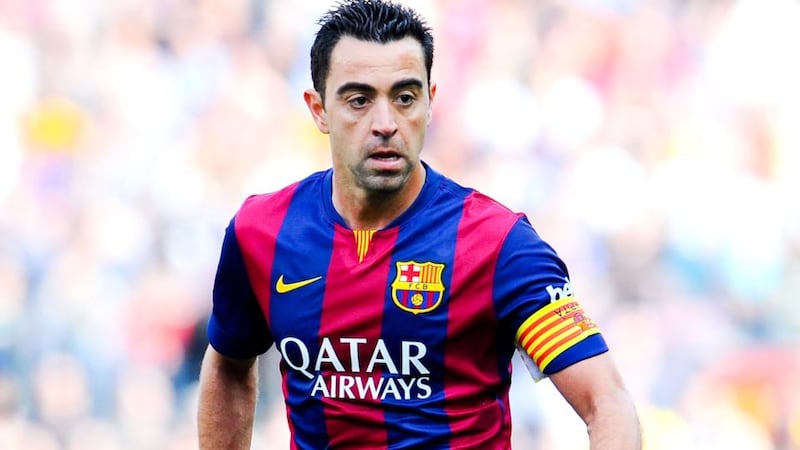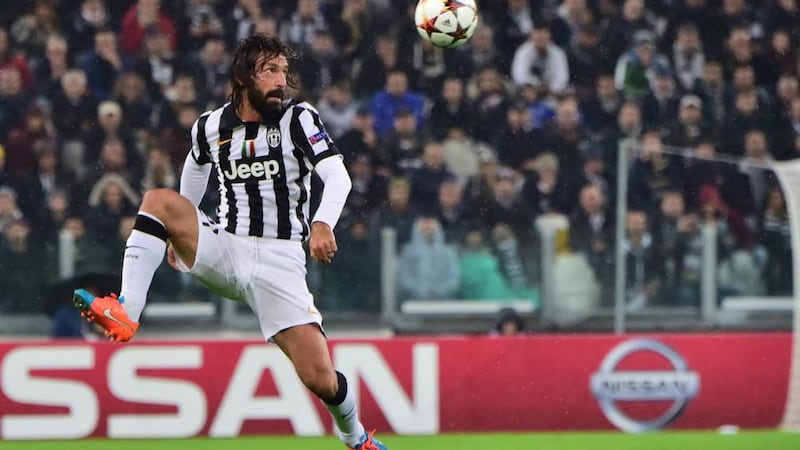Someone calculated that the gematria values – where a numerical value is assigned to a letter – of Xavi (56) and pass (55) and they are almost identical. The world of football has possibly never known a man to distribute the ball like Xavi Hernández who for years – until more fleeting appearances this season – has been out-passing every other player in La Liga.
Arguably only Andrea Pirlo in the modern game can rival him in being so niggardly with possession. As the former Juventus striker Zbigniew Boniek put it: "To pass the ball to Andrea Pirlo is like to hide it in a safe."
The peculiar thing about these two great playmakers is that they have been unloved for much of their careers. Pirlo made his Serie A debut at just 16 years of age in 1995 with his local club, Brescia, but once he moved to a bigger club – to Inter Milan in 1998 – he couldn’t crack it. Twice Inter loaned him out.


It was only when Pirlo was on his second loan spell – back in Brescia, as it happened – that the old, grizzled Italian coach Carlo Mazzone converted him from a traditional, attacking No 10 into a deeper-lying midfield role – what Italians refer to as the regista. Mazzone had found a key that has been unlocking Italian defences for the last 15 years.
After moving to Milan in 2001, Pirlo won a couple of league championships and two Champions League titles and, of course, put in a man-of-the-match display for Italy in their triumphant 2006 World Cup final against France in Berlin. He said he offered up a prayer on his way to taking Italy's first penalty in the shoot-out, reckoning there was a good chance he would get a positive response "because if God exists, there's no way he's French".
Impasse
More rejection ensued for Pirlo, however, when Milan refused to offer him more than a one-year contract in 2011; Pirlo, who was 32 at the time, thought he deserved three years. There was an impasse so he was put on the transfer market.
Juventus stepped into the breach, snapping him up in what Juve's goalkeeper Gianluigi Buffon described in giddy disbelief as "the signing of the century". The grand old lady has already got four years (and four straight Serie A titles) out of him, the latest, ironically, under the stewardship of Massimiliano Allegri, the man who discarded him as Milan coach in 2011 because he wanted a more robust midfielder.
Xavi, too, has been unfashionable for much of his career, having broken into Barça's first team as an 18-year-old who rode the metro to the 99,000-seater Camp Nou for matches. Louis van Gaal gave him his Champions League debut – in a competition he has made more appearances in than any other player – against Manchester United in the autumn of 1998, a 3-3 draw in which the late equaliser came from a penalty kick by Luis Enrique, Xavi's current manager.
Xavi’s talent had long been flagged at Barça. He joined its famous youth academy at La Masia in 1991, but for several years in the senior side he failed to make his mark as a midfielder. The club considered offers from Manchester United and Milan.
It was only when Frank Rijkaard signed Edgar Davids in January 2004 and pushed Xavi more forward (in contrast to the switch made by Pirlo) that Xavi found his niche and became the reference point for both Barça and Spain.
Still, though, there were sceptics in the press. The late conversion of his critics in the media is something that still bristles with Xavi. Two months ago in a press interview in Spain, he complained that, “people only discovered me in Euro 2008” when Spain won the first of two European Championships. He had been a first-team player for 10 years at Barça by this stage.
“If I leaf through papers from years gone by,” he said, “it makes me laugh: they said I was obsolete, that Edgar Davids made me look good, that I only moved the ball from side to side. They called me ‘the windscreen wiper’.”
Collection of small men
One of the most revolutionary aspects about Xavi's impact on the game has been his physique. He is at 5ft 7in, a small man among a collection of small men at Barça. Back in the middle of the last decade, powerful, hulking men like Patrick Vieira dominated midfield.
The game was about knockdowns, rebounds and the second ball. Because players' stamina was constantly improving, space was becoming less available. As Jorge Valdano, one of the game's great gurus, quipped "midfield is a good place to meet people".
Xavi made it acceptable to use shrewdness instead of strength to make space. He moved the ball so quickly other players couldn’t get at it. Dizziness set in whenever they spent too much time on his carousal – he proved that a team could both attack and defend by keeping hold of the ball.
Few players have his bearing. He goes about the pitch, ball at his feet, with his head cocked, upright and swivelling like a periscope, scouting for a player in space to move the ball onto. It seems he never loses possession. Perhaps Alex Ferguson summed it up best when saying in exasperation: "I'm sure I saw him give the ball away once."
Pirlo offers his teammates similar sanctuary. Fans of Juve like to parade around in T-shirts, adorned with his image and the reassurance: “Keep calm and pass it to Pirlo.” He is obsessive about space, like Xavi, but for more selfish reasons.
"I'm a bit of a wandering gypsy on the pitch," he wrote in his autobiography, I Think, Therefore I Play. "A midfielder continually on the lookout for an unspoilt corner where I can move freely just for a moment, without suffocating markers sticking to me like shadows. All I'm after is a few square metres to be myself. A space where I can continue to profess my creed: take the ball, give it to a team-mate, team-mate scores."
Pirlo and Xavi came close to playing together in midfield. When Pep Guardiola was manager of Barça in 2010, he got his assistant, Manel Estiarte, to lure Pirlo into his office in the bowels of the Camp Nou after a pre-season tournament match between Barça and Milan.
Guardiola, who played for a couple of seasons at Brescia, spoke in fluent Italian. He wanted Pirlo to alternate with Xavi, Andrés Iniesta and Sergio Busquets in midfield, admitting his team was already very strong but that Pirlo "would be the icing on the cake". Pirlo wrote in his autobiography that he'd have "crawled on all fours" to join Barça, the team he chooses on his PlayStation, but Milan resisted their overtures.
Nonchalantly lobbed
Both men are unflappable on the pitch, epitomised by Pirlo’s collection of Panenka-style penalties, including the one scored against England in Euro 2012 when he nonchalantly lobbed the ball gently into the centre of Joe Hart’s goal, the flailing keeper looking like a man who had slipped on some ice. They exude serenity off it, too. Xavi likes to spend his downtime in the Pyrenees picking mushrooms. Pirlo retreats to his vineyard where he produces about 15,000 to 20,000 bottles of wine a year.
They will soon have more time to indulge their hobbies. Xavi will make his last appearance for Barça tonight in the Champions League final. He is heading to Qatar for two seasons. Pirlo has hinted that if Juventus were to win – in the city where he won the World Cup with Italy – he would consider it a perfect way to conclude his top-flight playing career, going out, as Enrique said in reference to Xavi, through la puerta grande, the big door.










